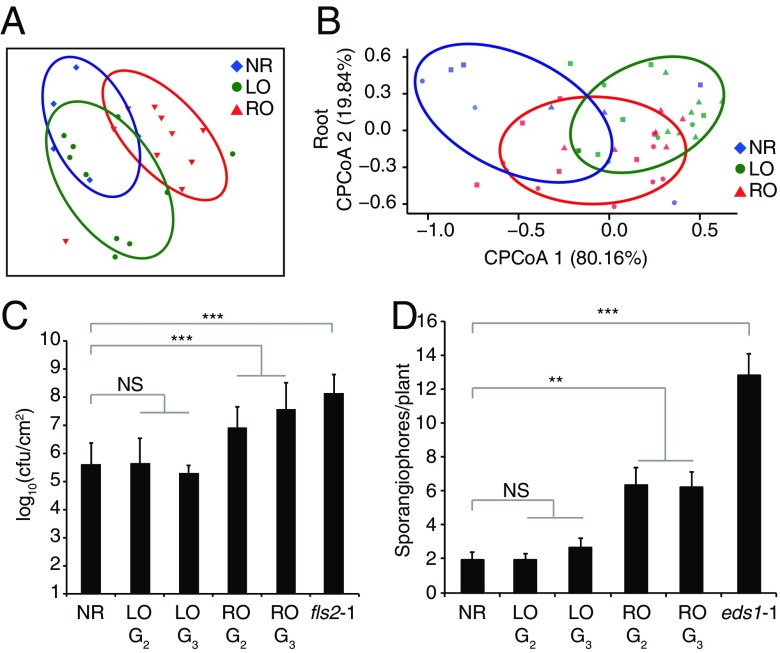Fig. 2.
Plants regenerated from roots or leaves interact differently with beneficial and pathogenic microbes. (A) PCA of Bray–Curtis distances of bacterial communities present in roots of nonregenerated and regenerated plants grown in natural soils (n = 10). (B) Canonical analysis of principal coordinates (based on Bray–Curtis distances) showing different root-associated communities of SynComs colonized on nonregenerated and regenerated plants (n = 12). (C) Susceptibility of nonregenerated and regenerated plants to P. syringae pv. tomato strain DC3000 infection. Bacterial growth was determined at 3 d after inoculation (100 cfu mL−1). Data are mean ± SD values from three independent experiments. Statistical significance according to Fisher’s exact test: **P < 0.01, ***P < 0.001; NS, not significant. (D) Susceptibility of nonregenerated and regenerated plants to H. arabidopsidis (Hpa) Noks1 infection, as indicated by the number of conidiospores on leaves at 3 d after inoculation with a suspension of 300,000 spores/mL. Data are mean ± SD values from two independent experiments. P values were determined using Student’s t test.

